The war memorial they wanted to turn into a car park
This article contains affiliate links. We may earn a small commission on items purchased through this article, but that does not affect our editorial judgement.
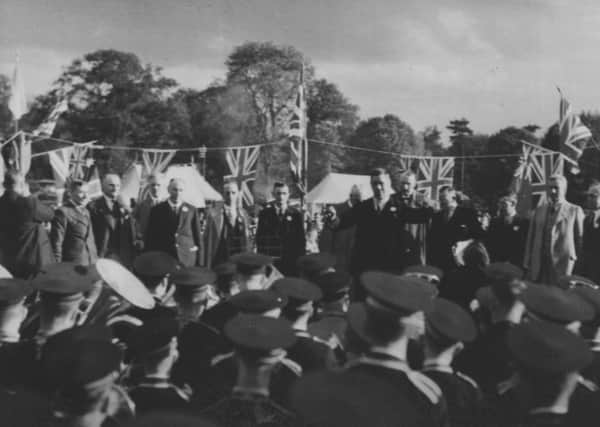

Also mooted at one time was a relocation of the gates.
To persons who are relatively new to Crawley or are visitors to the town, the name ‘memorial’ to this land by word association is perhaps misleading.
Some persons may also find it a little strange that one of the plaques on the gates has the heading ‘Ifield & Crawley’ as Ifield is now the name used for one of the neighbourhoods of the ‘new town’ construction.
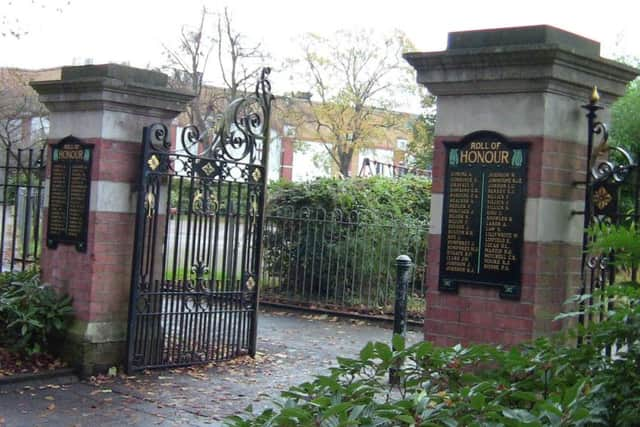

Advertisement
Hide AdAdvertisement
Hide AdPrior to 1955, all areas of the town adhered to the old and traditional parish boundaries.
The boundary between Ifield and Crawley was central on the west side of the High Street, from Three Bridges Road – now called Haslett Avenue – round to the monastery, southwards to The New Moon and northwards to County Oak.
The land development to the west toward Ifield in the 1880s was, at the time of World War One, known as West Crawley, the majority of the population lived in actual fact in Ifield parish.
Perhaps thought should be given as to why this open piece of ground still exists in the town centre as the new town plans show the whole area as a car park.
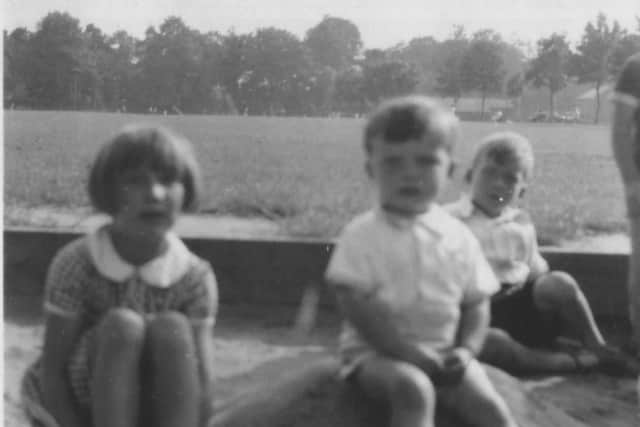

Ifield and Crawley War Memorial
Advertisement
Hide AdAdvertisement
Hide AdThe name ‘Memorial Gardens’ is a modern name. The current development of this site bears little resemblance to the amenities desired by the purchasers as their war memorial.
The two parish councils, not for the first time, co-operated for a lasting memorial to the communities’ war dead.
Early in 1919, two persons from each parish were given the task of getting suggestions from the public for a memorial, and then the most popular ideas were voted upon by every adult in the community, which resulted in wishing for a recreation ground which could be used by everyone for leisure activities as opposed to the confines of a building.
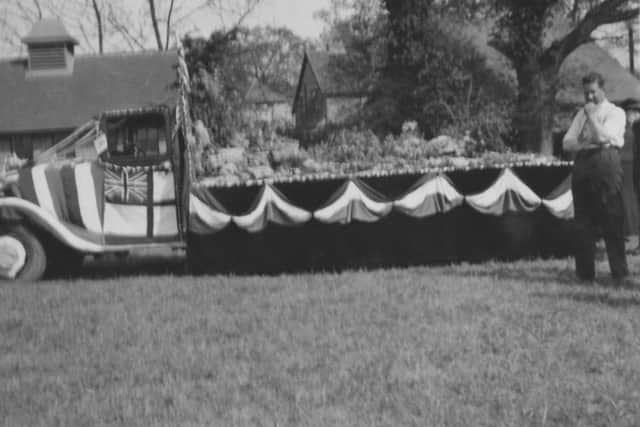

It also served two purposes, a future for the children and an honour for the dead.
Advertisement
Hide AdAdvertisement
Hide AdFor not only had many of the town’s cricketers been killed or severely injured, but their original pitch and village athletics track, which was on the site of the present Northgate Road, had been sold by the Montefiore family and ploughed for wheat growing in 1916.
Finding a suitable site near the town centre was difficult. All the fields behind 55 High Street, through what is now Queens Square to and including College Road, was owned by The Sussex Electricity & Supply Company.
The owner of the company was Sir John Drughorn. He agreed to sell approximately a seven acre field to the committee for £862 18 shillings 3 pence.
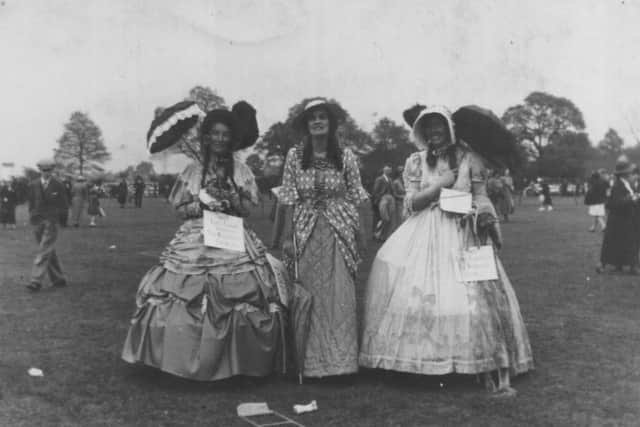

This was not the first choice of site, but all that was affordable. Every one in the town contributed what they could afford, no matter how small, and in all £1,020 5 shillings 5 pence was raised (around £36,000 today). On March 16 1920, Dr Sidney Matthews purchased the land on behalf of the committee.
Advertisement
Hide AdAdvertisement
Hide AdApart from providing the site amenities, the biggest problem to the committee was that of access.
From the monastery gates, there was just a mud lane to Three Bridges. The land lay in the parish of Worth, and any development needed approval of Cuckfield District Council, who refused to pay for a hard surface road extension.
To lay a hard surface as far as the field entrance cost the committee a further £25 10 shillings. In total, the project cost £1,063, the biggest outlay being for the cricket pitch turf and laying, all protected by removable posts and chains.
When the whole project had reached an advanced stage, though work would be on-going, the land was registered with the Charity Commission on October 22 1921 (Reference number 100449/4B and 4C). The question of maintenance now arose.
Advertisement
Hide AdAdvertisement
Hide AdThe two parish councils were approached, who agreed to be trustees and a levy was made upon the rates for the upkeep of the grounds.
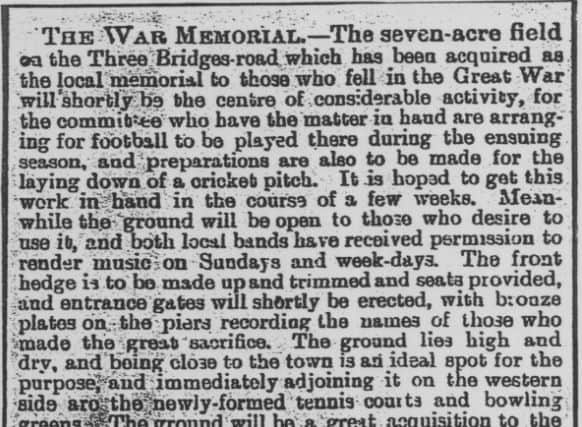

The memorial was again registered with the Charity Commission in January 1922 (Reference number 100449/2B) naming the two parish councils and their successors as trustees in perpetuity, responsible for the maintenance of the memorial.
The covenants upon the land preclude business being carried out on the land or money to be made from it, nor built upon, neither can it be disposed of without permission of the Charity Commission.
As a war memorial, it is protected by government legislation. An act of Parliament would be required to change its designation.
Advertisement
Hide AdAdvertisement
Hide AdSo it is the land that is Crawley’s war memorial, not the gates, and the land still belongs to the residents of the town.
The gates were a later concept and addition proposed and commissioned by Sir John Drughorn as a fitting entrance to the memorial.
They, with their four bronze plaques engraved with the names of all the community war dead, were erected in June 1921.
At a much later date, a fence was erected the length of the Three Bridges Road side to protect the hedge from intruders, and iron kissing-gates placed near to either end.
Advertisement
Hide AdAdvertisement
Hide AdA park keeper was appointed and all the gates were locked at nightfall for protection of the property.
For the next 30 years, the recreation ground most certainly fulfilled and exceeded the original committee’s aspirations.
Many clubs wished to use the facilities, so a rota was established and a small rent charged towards the up-keep of the grounds.
There were two cricket teams, which did not only require match time but practice time as well.
Advertisement
Hide AdAdvertisement
Hide AdThe Wednesday Cricket Club, founded in 1904 by John Penfold, shortly amalgamated with the Crawley Club 1881 due to a shortage of men.
Football by the Boy Scouts and both schools, also cricket in season. The schools did not pay, but for the first time had use of a playing field.
So they played football, cricket, stoolball and rounders. Ladies teams were formed in the latter three sports.
For the summer, running tracks were painted on the grass so athletics continued both for the adults and schoolchildren.
Advertisement
Hide AdAdvertisement
Hide AdDuring the first few years of the ground opening, the Armistice Day Service was held there in order to cater for the whole congregation, as the churches were unable to accommodate such large numbers of persons.
The Town Brass Band and West Crawley Silver Band played at weekends, which often culminated in dancing. There were also band competitions bringing teams from far and wide.
In 1928, every child’s dream was fulfilled. Moses Nightingale and his wife, Ruth, donated play equipment the like of which had never been seen in the area before, it being of the most modern design.
How the different apparatus survived the first few days let alone the next 25 years gives testament to the strength of their construction!
Advertisement
Hide AdAdvertisement
Hide AdEvery sit-able surface was closely packed with excited youngsters. The event has been recorded on cine-fiIm.
There were six swings, three with bucket seats for toddlers, two slides and two plank-swings, a large and a small size, a roundabout, a seesaw, a maypole with swinging-ropes and an ocean-wave roundabout.
Children from the surrounding villages brought picnics to enjoy an exciting day out during school holidays.
All the apparatus being fixed to strong iron-frames, the children eventually found other forms of fun. Forget health and safety! You could form somersaults or hang upside-down on the frames, swing as high as possible both standing and sitting on the seat. Or, when the seat reached its fullest height on a forward swing, jump to see who could land furthest forward.
Advertisement
Hide AdAdvertisement
Hide AdThe largest slide had a brass covering for the last few feet of its length. If it was rubbed with candle wax for a while then it became exceedingly slippery. How far could you shoot from the end of the slide? Also, you could sit forward or backwards, or similarly lie down and even travel in twos. Some of these apparatus are now in Goffs Park.
Later, a sand pit was built for school sports jumping events, at other times toddlers used the pit for sandcastles.
Bicycles were not allowed on the premises, and were left inside the gates chained to the fence. Any group which rented any part of the ground for any activity was responsible for repairs for any damage to turf or apparatus.
Ice-cream vendors were required to park outside of the gates. In 1932 there was ‘Walls’ and then ‘Eldorado’ and, in my time it was ‘Gizzy’ with his tricycle, as vans were not used, selling his half-penny cornets and one-and-a-half-penny wafers.
Advertisement
Hide AdAdvertisement
Hide AdOnce water and sewage drainage was connected to the Three Bridges Road, toilets were built by the western boundary.
A drinking fountain was given by the Martin family as a memorial to Dr Timothy Martin, who had been the town doctor for 54 years.
Just the dogs’ drinking trough now remains.
Due to lack of funds, a cricket pavilion was not in place until 1935, when one was built and gifted to the club by Sir John Drughorn to mark the Silver Jubilee of George V.
Local carnival processions for such events as Coronations culminated on the grounds with various activities, such as dancing and tug-of-war, and the town brass band playing. These processions continued throughout World War II when the country held fundraising promotion weeks.
Advertisement
Hide AdAdvertisement
Hide AdDuring the period of 1942-3, the Canadian troops billeted in the surrounding estates always participated in these local events, and one summer made a request to hold an inter-base baseball competition.
The request was granted and, for the first time ever, the local inhabitants witnessed this sport. There was a very large audience, and many cheers when the ball frequently landed on the opposite side of the Three Bridges Road.
At the end of 1945, two further plaques were added to the gate-piers to commemorate the local fatalities of World War II, including those of all the civilians killed in February 1943 and July 1944.
These gates are only one of two pairs which survived the removal of all garden ironwork and fences in the area, which was taken to support the war effort.
Advertisement
Hide AdAdvertisement
Hide AdWith the advent of the New Town Development Corporation, compulsory purchase orders were served on all central businesses and land. In 1953, order number 36 was served on the war memorial.
The plan shows this area was designated to be one vast carpark, with a central road through the gateway as an approach to the proposed town hall site.
So, the Corporation had not done its homework – neither had they anticipated such a public outcry.
A public enquiry was held in 1954, with little success.
If it had not been for the determination and tenacity of the chairman of the parish council, Percy Wales, meeting weekly over many months with Sir Thomas Bennett and Colonel Turner until he finally succeeded in preventing this development, today’s park would not be under discussion.
Advertisement
Hide AdAdvertisement
Hide AdThe memorial was released back to the community in 1955, but damage had already been done.
College Road was under construction, which impinged on the cricket pitch.
To compensate for the loss of this piece of land, 12 acres of the newly designated Goffs Park was offered and accepted for a cricket pitch, and these 12 acres are still subject today to the same terms and conditions as the original, under the Charity Commission, and it cannot be built upon.
In the early 1970s, an arts centre was proposed to be built on the recreation ground site. This proposal was also defeated.
Advertisement
Hide AdAdvertisement
Hide AdProblems arose again in the 1980s, when two of the name plaques from the gates were stolen, supposedly for the metal. Those of today are of a cheaper metal and the remaining original plaques are held by Crawley Museum.
The adjacent bowls green and tennis courts were not part of the memorial land.
In the succeeding years, several changes have taken place, so minute to be almost unnoticeable to the general public. Small snippets of land have been taken, so the plot is becoming smaller.
The cricket pavilion was demolished in 1999.
Don’t miss out on all the latest breaking news where you live.
Advertisement
Hide AdAdvertisement
Hide AdHere are four ways you can be sure you’ll be amongst the first to know what’s going on.
1) Make our website your homepage at www.crawleyobserver.co.uk
2) Like our Facebook page at www.facebook.com/crawleyobserver
3) Follow us on Twitter @Crawley_Obby
4) Register with us by clicking on ‘sign in’ (top right corner). You can then receive our daily newsletter AND add your point of view to stories that you read here.
And do share with your family and friends - so they don’t miss out!
The Crawley Observer - always the first with your local news.
Be part of it.